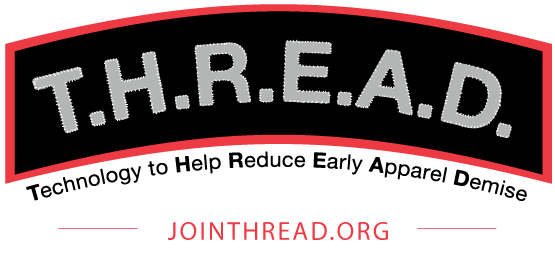Selection Logic Glossary
Introduction to Selection Logic
In order to select the right thread for a specific application, there are three elements you should consider: Fiber Type, Thread Construction, and Thread Size. American & Efird offers a thread education workshop, called Threaducation®, on how to select the best thread for a specific application. This seminar is not about how we make thread but how to select the best fiber type, thread construction and size for a specific application. The information on this page is a summary of that seminar.
Most people who are involved in the selection of thread make their decision based on one or all of the following reasons:
• Sewability (Process ability)
• Seam Performance (Seam strength, seam durability, etc.)
• Seam Appearance (Color, color fastness, stitch appearance, etc.)
• Availability (Is the product available to meet my needs?)
• Cost (Cost includes both the price and the hidden costs associated with the above)
Thread Selection by End Use is intended to help you ask important questions about thread and then guide you in the selection of the best fiber type, thread selection, and thread size for a specific application. A&E Sales Representatives and Technical Service Team are also available to answer specific questions about thread application and share with you their experience of what is the best thread to use.
Thread Application and Selection Examples
Example One
Let’s say you are making a men’s dress shirt or ladies blouse and the fabric is light-weight and susceptible to seam puckering. You know that automatic sewing equipment will be used on some operations and thread breakage is common on these machines. You also would like the thread to match the fabric it is being sewn in to and have good color fastness characteristics. What thread type and size would you recommend?
Looking at the Thread Selection Charts you will find information like this:
Sewability Questions:
Seam Puckering? Cotton Wrapped Core or Polyester Wrapped Core
Are there any Automatic Multi-directional Lockstitch Machines? Cotton Wrapped Core or Polyester Wrapped Core
Seam Appearance Questions?
Color fastness? Polyester or Vat Dyed Cotton
Thread Application & Size Questions?
Weight? Thread Size T-18, T-21, T-24,T-26 (Shirt, Blouses, & Tops)
Looking under the Fabric Weights & Thread Sizes section, you will find that for 2 to 4 oz. goods, you would generally use a Tex 16, 18, 21, or 24 thread size.<
If you read the description under Corespun Thread Construction it says corespun threads:
• Sew on all types of sewing equipment with minimum sewing problems.
• Sew on automatic multidirectional sewing machines.
• Have a higher strength per size than spun polyester threads. (Allows the use of a smaller thread size to help
• minimize seam puckering. See our Technical Bulletin on Minimizing Seam Pucker.
• Have a fibrous surface giving a soft hand, low sheen appearance.
• Have a high elongation for greater seam strength and seam elasticity.
• PW Core threads have very good color fastness, chemical resistance & enzyme resistance.
• They are less expensive than cotton wrapped core.
• Therefore the correct selection would be a T-18 or T-24 Poly Wrapped (PW) Core thread.
Example Two
You are making a Tee Shirt that is primarily sewn with a overedge stitch construction. You want a thread with good chemical resistance and a thread should be as inexpensive as possible.
Therefore T-18 Textured Polyester thread would be recommended. A T-21 Spun Polyester might be required if there are any sewing operations requiring greater ply security like sewing on a pocket with a single needle lockstitch machine.
Sewability Questions:
Coverstitch: Spun or Textured
Seam Performance?
Chemical Resistance? Polyester
Thread Application & Size Questions?
Light Weight?Thread Size T-18, T-21, T-24,T-27 (Shirt, Blouses, & Tops)
Textured Thread Construction:
• High “fluff” thread for excellent seam coverage and seam elasticity.
• Lowest purchase price.
• Textured Polyester – for knit garments like Tee Shirts, fleece.




